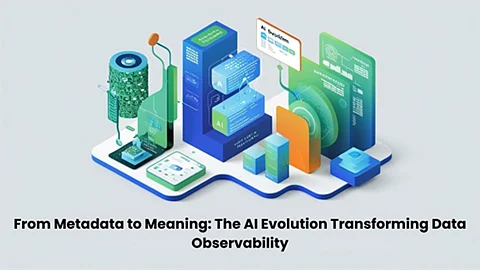

An accomplished technologist and contributor to advanced engineering discourse, Thomas Aerathu Mathew offers a compelling view into the convergence of AI and metadata. His work explores how artificial intelligence revolutionizes the way organizations interpret, govern, and respond to complex telemetry within data ecosystems, enabling smarter operations and deeper insights across increasingly intricate digital infrastructures.
Modern enterprise data environments have become vast, distributed webs of cloud systems, data warehouses, orchestration frameworks, and visualization layers. These systems produce massive streams of telemetry, which often overwhelm rule-based monitoring tools. Traditional methods are ill-equipped to handle the velocity, variety, and volume of metadata today’s architectures generate. This results in visibility gaps that compromise performance and reliability, exposing organizations to operational and compliance risks.
At the heart of this evolution lies metadata descriptive information about data that ranges from structural definitions to access patterns and system usage. Structural metadata details schema relationships; operational metadata captures processing times and job performance; lineage metadata tracks data flow across transformations; access metadata logs usage and control; and usage metadata reveals patterns of data consumption. When aggregated and analyzed, these forms provide a panoramic view of enterprise data ecosystems.
Artificial intelligence enhances metadata observability through machine learning techniques that identify anomalies before they trigger failures. Time-series models, clustering algorithms, and ensemble methods achieve high accuracy in detecting outliers, enabling proactive responses to subtle deviations. For instance, clustering techniques can isolate abnormal job performance or user behavior with up to 40% greater efficiency than conventional systems.
Natural Language Processing (NLP) significantly enhances metadata accessibility by allowing users to locate data using conversational queries through semantic search, eliminating the need for complex commands. It automates documentation, easing manual workload, and analyzes SQL queries to uncover optimization opportunities in past usage patterns. These capabilities not only accelerate time-to-insight but also make valuable data context more accessible across technical and non-technical users alike.
Advanced AI models such as deep learning and graph neural networks are now employed to reveal hidden data relationships and foresee potential system failures. Recurrent neural networks (RNNs) support temporal modeling by identifying early signs of pipeline issues, while convolutional networks analyze visual telemetry to detect dashboard anomalies. These innovations transform observability from a reactive process into a proactive, predictive diagnostic system, enhancing reliability and operational foresight.
Causal AI represents a groundbreaking advancement by focusing on uncovering the "why" behind data anomalies, not just identifying the "what." Using techniques like counterfactual analysis and structural equation modeling, it pinpoints root causes with precision, reducing resolution times by over 40%. This approach is especially valuable in intricate environments where issues often extend across multiple systems, teams, and layers of technology, enabling faster, more effective problem-solving.
Implementing AI-driven metadata analytics requires a centralized architecture. A unified metadata repository ensures complete visibility, while real-time streaming infrastructure allows organizations to act on time-sensitive insights. Integration with existing tools is key leveraging current monitoring investments while extending their capability through intelligent metadata interpretation.
Modern observability platforms now automate metadata collection, correlate events across systems, and prioritize alerts based on contextual relevance. These platforms reduce false positives dramatically, enable self-service investigation, and support historical trend analysis. The result is faster issue detection, reduced downtime, and better operational outcomes.
Implementation success comes when metadata observability is aligned with high-value use cases, scaling down the application, and good practices to widen on-the-fly. Meanwhile, ownership must be placed, and feedback is essential for the evolution of models within the organization. As optimization increases within the teams, they become less involved with reactive troubleshooting and more involved with strategic innovation.
With AI-powered metadata analytics in place, organizations have reported 70% fewer data incidents, a 65% enhancement in the speed of root cause analysis, and a 60% reduction in compliance workload. From a financial perspective, there are savings in storage and compute costs, while from an operational point, higher performance in query, capacity planning, and innovation is observed. Perhaps the most important effect of all is a boost to organizational confidence in data and thus in decision-making.
In conclusion, AI has moved beyond merely augmenting human monitoring to beginning to reshape the very building blocks through which observability is conceived. With self-diagnosis, systems explaining their decisions, and even autonomous issue remediation, organizations will be able to reach new heights of data reliability and agility. In this world, metadata is no longer a mere byproduct; it is the very language of operational intelligence. In the words of Thomas Aerathu Mathew, AI-assisted metadata analytics is not just a nice feature; it is an urgent paradigm change toward building resilient, scalable, and intelligent data infrastructures upon which the enterprise success of tomorrow will be defined.
